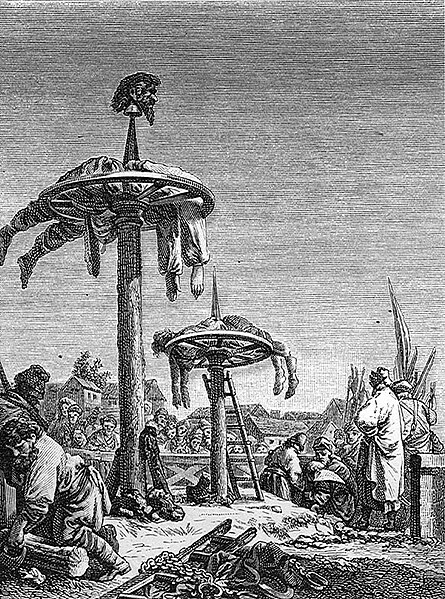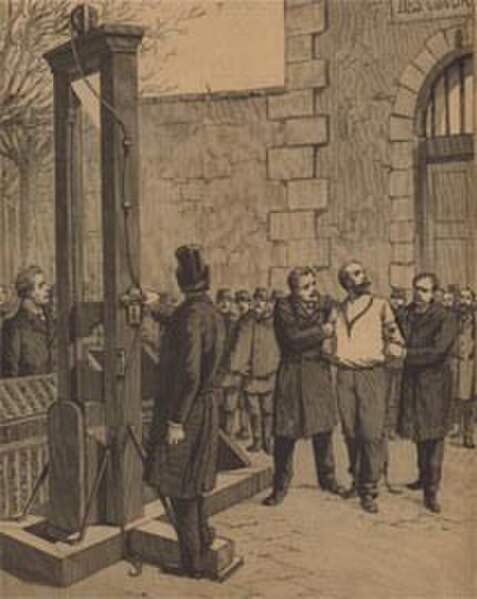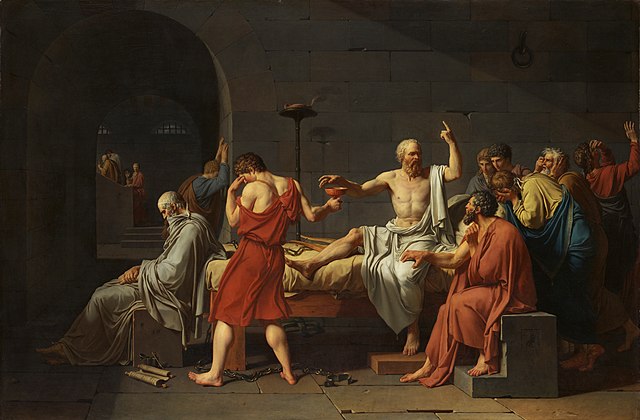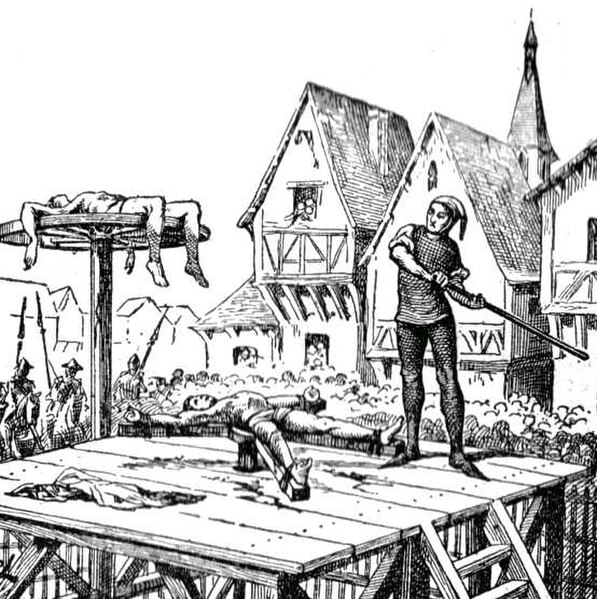The breaking wheel, also known as the execution wheel, the Wheel of Catherine or the (Saint) Catherine('s) Wheel, was a torture method used for public execution primarily in Europe from antiquity through the Middle Ages up to the 19th century by breaking the bones of a criminal or bludgeoning them to death. The practice was abolished in Bavaria in 1813 and in the Electorate of Hesse in 1836: the last known execution by the "Wheel" took place in Prussia in 1841. In the Holy Roman Empire it was a "mirror punishment" for highwaymen and street thieves, and was set out in the Sachsenspiegel for murder, and arson that resulted in fatalities.
Execution wheel (German: Richtrad) with underlays, 18th century; on display at the Märkisches Museum, Berlin
An execution wheel exhibited in the Museum of Cultural History Franziskanerkloster in Zittau, Saxony, Germany, dated in the centre with year 1775. Bolted to the lower rim edge is an iron blade-like thrust attachment
Breaking-wheel machine used to execute Matthias Klostermayr, Bavaria, 1772
Executions of Cossacks by Russian troops in Baturyn or Lebedyn, 1708–1709
Capital punishment, also known as the death penalty and formerly called judicial homicide, is the state-sanctioned practice of killing a person as a punishment for a crime, usually following an authorised, rule-governed process to conclude that the person is responsible for violating norms that warrant said punishment. The sentence ordering that an offender be punished in such a manner is known as a death sentence, and the act of carrying out the sentence is known as an execution. A prisoner who has been sentenced to death and awaits execution is condemned and is commonly referred to as being "on death row". Etymologically, the term capital refers to execution by beheading, but executions are carried out by many methods, including hanging, shooting, lethal injection, stoning, electrocution, and gassing.
Anarchist Auguste Vaillant about to be guillotined in France in 1894
The Christian Martyrs' Last Prayer, by Jean-Léon Gérôme (1883). Roman Circus Maximus.
The Death of Socrates (1787), in the Metropolitan Museum of Art in New York City
The breaking wheel was used during the Middle Ages and was still in use into the 19th century.








